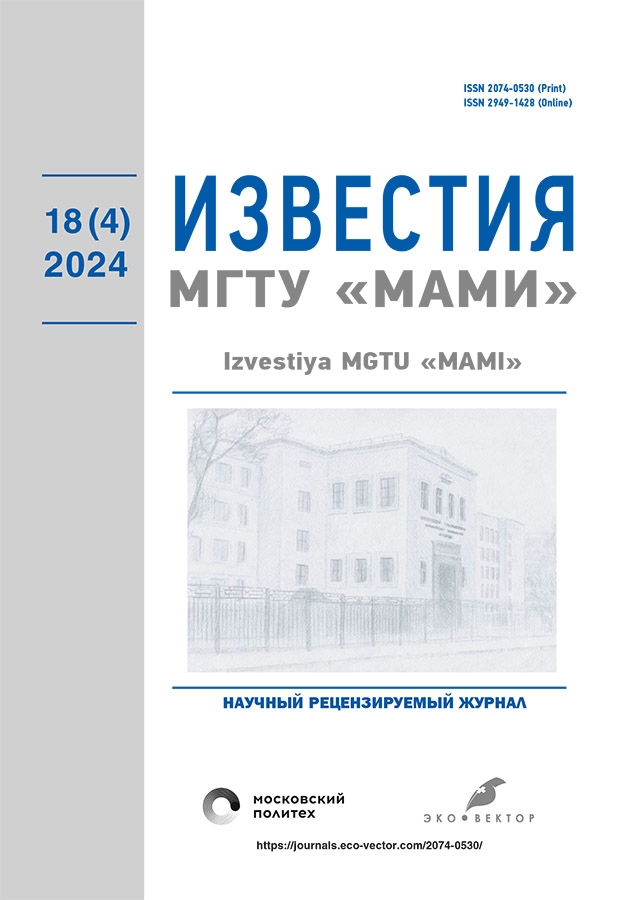Analysis of object detection problems in autonomous driving systems based on radar dat
- Authors: Kuzin A.D.1,2,3, Debelov V.V.1,2, Endachev D.V.1,2
-
Affiliations:
- Moscow Polytechnic University
- Central Research Automobile and Automotive Engines Institute “NAMI”
- Moscow University of Finance and Law
- Issue: Vol 18, No 4 (2024)
- Pages: 278-288
- Section: ROBOTS, MECHATRONICS AND ROBOTIC SYSTEMS
- URL: https://bakhtiniada.ru/2074-0530/article/view/311253
- DOI: https://doi.org/10.17816/2074-0530-633495
- ID: 311253
Cite item
Full Text
Abstract
Background: Modern autonomous driving systems impose high demands on the quality of object detection and classification in the surrounding environment. Radar systems, due to their resilience to adverse weather conditions and ability to measure velocity, play a crucial role among the object and obstacle detection systems used in autonomous vehicles. However, various technical issues related to noise, incorrect classification, and errors in determining object characteristics can hinder the operation of these systems.
Objective: Identification and analysis of the main problems of object detection and classification based on radar data, and assessment of their impact on the safety and performance of autonomous driving systems.
Methods: In this study, experimental data collection was carried out in city traffic conditions using the ARS 408 automotive radar. Modern software tools including the Robot Operating System (ROS) were used to analyze and process the data. Detection quality evaluation metrics such as IoU, Precision, Recall and F1-score were applied in the study.
Results: Within the study, the methodology for radar system data analysis and identification of the main problems encountered during object detection, including the effects of noise, classification errors and object size biases, is developed. Approaches to assessment of quality of the detection algorithms are proposed and a comparative analysis of the convergence of object detection data under various conditions is carried out.
Conclusions: The results highlight the main problems of object detection by radar systems and help to assess the quality of current algorithms. The practical significance of the study lies in analyzing the weaknesses of object detection systems and providing data for algorithm improvement, which can enhance the safety of autonomous vehicles.
Full Text
##article.viewOnOriginalSite##About the authors
Anton D. Kuzin
Moscow Polytechnic University; Central Research Automobile and Automotive Engines Institute “NAMI”; Moscow University of Finance and Law
Author for correspondence.
Email: anton.kuzin@nami.ru
ORCID iD: 0009-0005-3342-8526
SPIN-code: 6493-7201
Engineer of the Electronic Devices Center
Russian Federation, 38 Bolshaya Semenovskaya st, Moscow, 107023; 2 Avtomotornaya st, Moscow, 125438; MoscowVladimir V. Debelov
Moscow Polytechnic University; Central Research Automobile and Automotive Engines Institute “NAMI”
Email: vladimir.debelov@nami.ru
ORCID iD: 0000-0001-6050-0419
SPIN-code: 8701-7410
Head of the Software Technology Department of the Software Center
Russian Federation, 38 Bolshaya Semenovskaya st, Moscow, 107023; 2 Avtomotornaya st, Moscow, 125438Denis V. Endachev
Moscow Polytechnic University; Central Research Automobile and Automotive Engines Institute “NAMI”
Email: denis.endachev@nami.ru
ORCID iD: 0000-0003-3547-7928
SPIN-code: 6514-7752
Executive Director for Information and Intelligent Systems
Russian Federation, 38 Bolshaya Semenovskaya st, Moscow, 107023; 2 Avtomotornaya st, Moscow, 125438References
- Bashtannik NA. Assessment of the Impact of Weather Conditions on the Accuracy Characteristics of Radar Stations. National Association of Scientists. 2015;7(2–3):18–19. EDN: YMGPRF
- Bobrovskaya OP, Gavrilenko TV. Unmanned Vehicle: Approaches to Implementation, Problems. Advances in Cybernetics. 2022;3(2):86–96. doi: 10.51790/2712-9942-2022-3-2-10 EDN: WEMZQL
- Debelov VV, Ivanov VV, Kozlovsky VN, et al. Modeling of an electronic speed control system for a passenger car in speed maintenance and limit modes. Electronics and electrical equipment of transport. 2013;(6):2–7. EDN: RTPZM
- Debelov VV, Ivanov VV, Kozlovsky VN, et al. Electronic speed control system for a car in speed maintenance and limit modes. Truck. 2013;(12):19–23. EDN: RUINER
- Debelov VV., Endachev DV, Evgrafov VV, et al. Ways to implement vehicle motion control systems based on the development of autonomous motion technology. Safety of wheeled vehicles under operating conditions. 2017:504–512. EDN: ZFNVAZ
- Debelov VV. Vehicle motion control systems: A tutorial within the framework of the curriculum for the compulsory discipline: "Designs of cars with combined power plants" (B1.V.DV2). Moscow: Central Order of the Red Banner of Labor Research Automobile and Automotive Engine Institute "NAMI". 2021. EDN: JXSIMD
- Endachev DV, Bakhmutov SV, Evgrafov VV, et al. Electronic systems of intelligent vehicles. Mechanics of machines, mechanisms and materials. 2020;(4):5–10. doi: 10.46864/1995-0470-2020-4-53-5-10 EDN: IGEFKA
- Kuznetsova AA. Precision — Recall Statistical Curves for Object Detection Quality Analysis. Applied Informatics. 2020;15(6):42–57. doi: 10.37791/2687-0649-2020-15-6-42-57 EDN: VEPVNN
- Mikhailovsky AE, Makhov AA, Khizbullin AR. Radar Systems of an Unmanned Vehicle as a Basic Technology for Safe Autopilot. In: XXV All-Russian Postgraduate and Master's Scientific Seminar Dedicated to the Power Engineer's Day: Conference Proceedings. In 3 volumes, Kazan, December 7–8, 2021 / Edited by E.Yu. Abdullazyanov. Kazan: Kazan State Power Engineering University. 2022;1:242–244. EDN: GYLYBY
- Mukhortov MV, Evgrafov VV. Real-time road marking recognition algorithm for embedded systems. Proceedings of NAMI. 2019;(1):45–54. EDN: CWEPPN
- Barbanera F, Dezaniciancaglini M, Deliguoro U. Intersection and union types: syntax and semantics. Information and Computation. 1995;119(2):202–230. doi: 10.1006/inco.1995.1086
- Feng D, Haase-Schutz Ch, Rosenbaum L., et al. Deep Multi-Modal Object Detection and Semantic Segmentation for Autonomous Driving: Datasets, Methods, and Challenges. In: IEEE Transactions on Intelligent Transportation Systems. 2020;22(3):1341–1360. doi: 10.1109/TITS.2020.2972974
- Standardized ARS Interface Technical documentation [internet] github.com: [accessed: 06/07/2024] Available from: https://github.com/lf2653/myrepository/blob/master/documentation/Short-Description_2017_07_09-06_ARS404-21%2BARS408-21_en_V1.06.pdf
- How do drones drive and are they as reliable as they say [internet] trends.rbc.ru: [accessed: 05/29/2024] Available from: https://trends.rbc.ru/trends/industry/5e54e8019a7947f8ae1d65b1?from=copy
- Radar part 1 [internet] cirspb.ru: (date of access: 08.06.2024)https://cirspb.ru/blog/info-navigation/radiolokacija1/
Supplementary files















